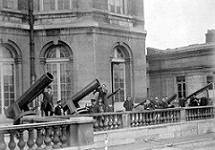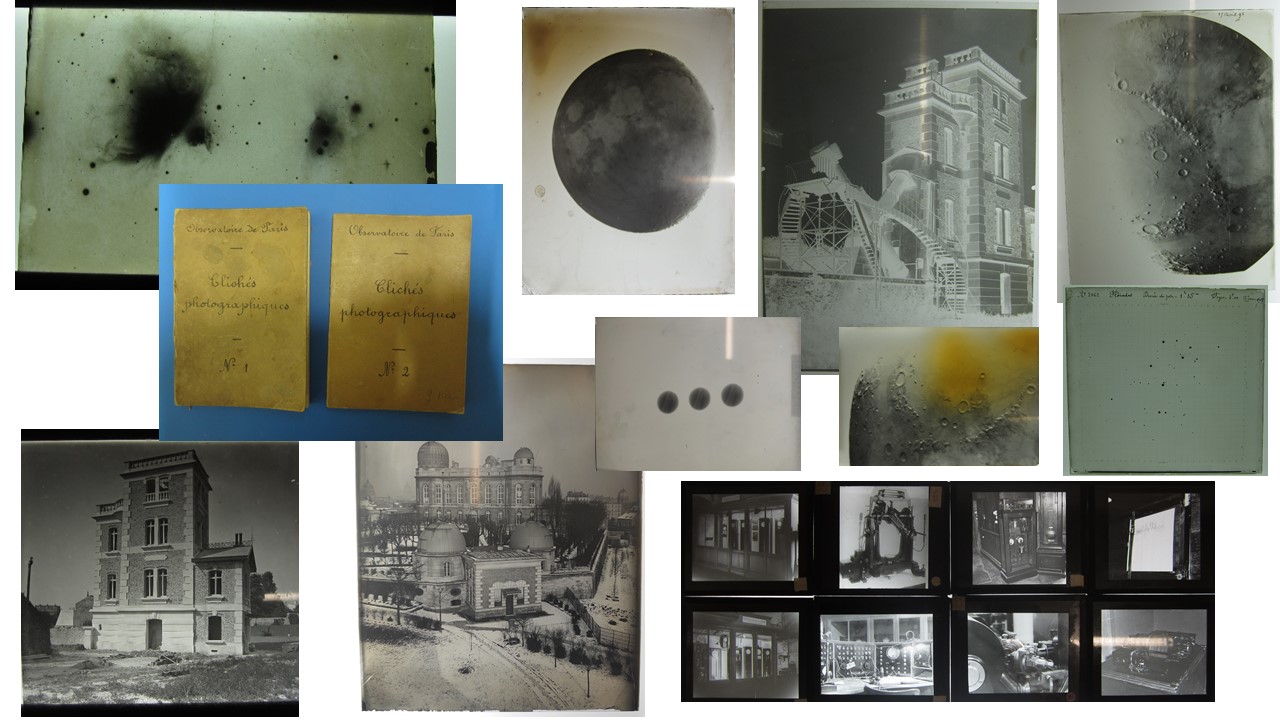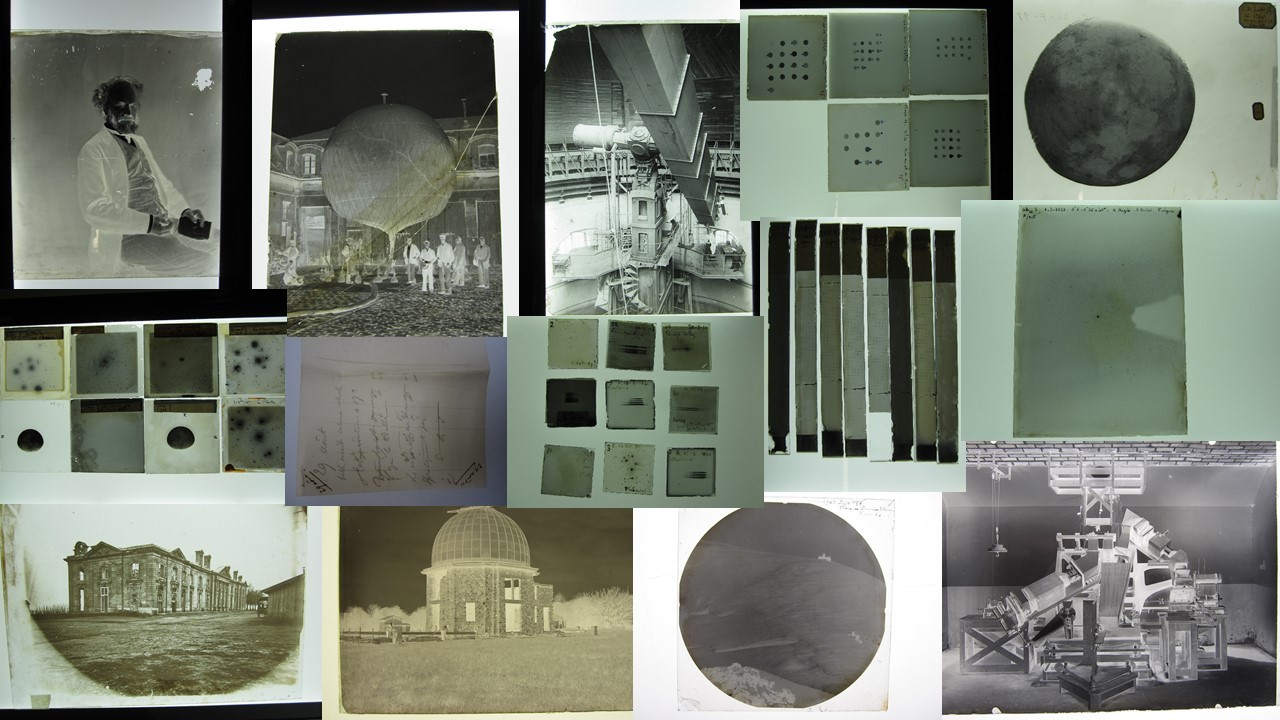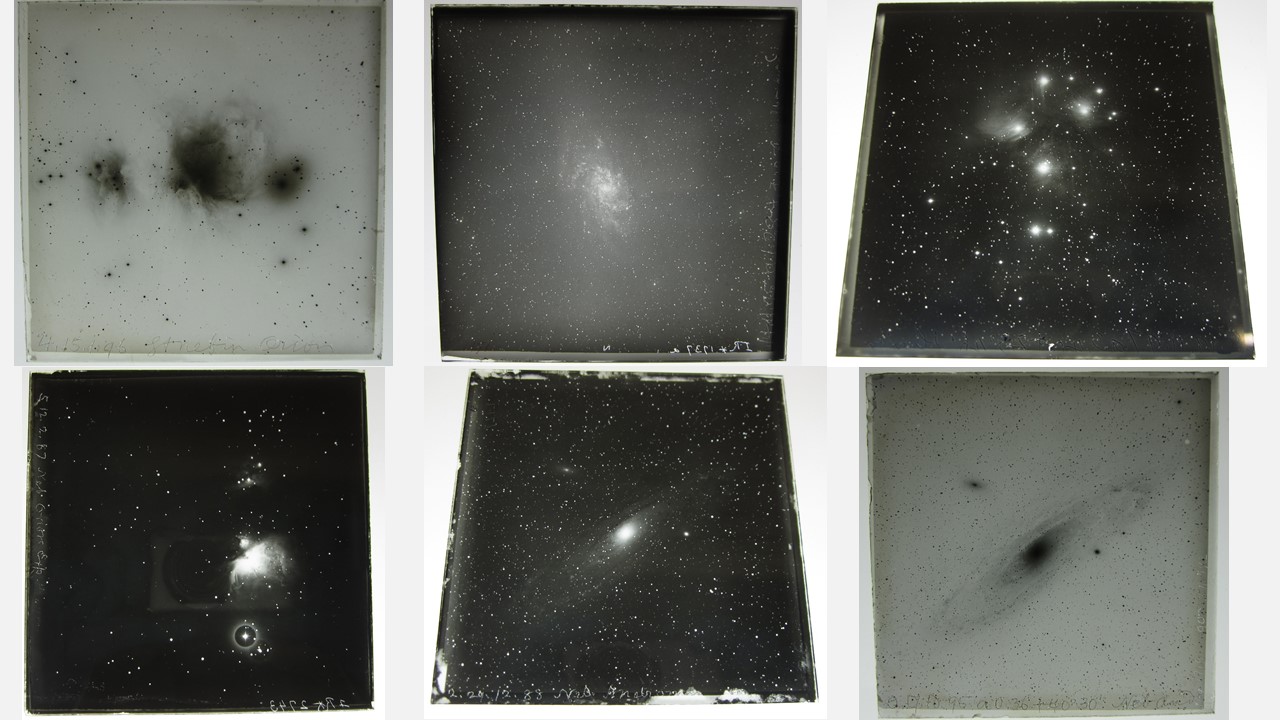
The Instruments

Among the instruments and remarkable objects in the collections, are the instruments signed or attributed to Erasmus Habermel, that were once part of great expeditions in Peru and in Lapland, during the 18h century. The museum collections also keeps instruments used to establish the metric system at the time of the French Revolution, and even those used by François Arago and Léon Foucault, furthermore the office of Alexandre de Humboldt…
From the Museum of Cassini IV to that of Admiral Mouchez
Cassini IV was the first to introduce the idea of an astronomical museum in order to "get rid of the bothersome visits of the onlookers and foreigners for whom an antique custom at the Observatory had granted entrance to the observing rooms" ("débarrasser des visites très importunes des curieux et des étrangers qu’il était d’antique usage à l’Observatoire de laisser entrer dans les cabinets d’observation"). In the large and prestigious meridian room on the second floor, he placed "many objects which could satisfy the curiosity of the public" ("quantité d’objets propres à satisfaire la curiosité du public"), and in particular old instruments which he considered had lost their usefulness. In 1791, under stress, he inventoried the instruments belonging to the Observatoire royal. A second inventory was done in 1793 in the presence of Cassini, « formerly director », by the commissioners Étienne Le Noir (1744-1832), Jacques Charles (1746-1823) and Jean-Nicolas Fortin (1750-1831), delegated by the Ministry of the Interior. They numbered 17 clocks,13 refractors, about fifty objective lenses, of which the oldest were made by Campani, Borelli and Huygens, 5 telescopes and 13 micrometers.

Many of these instruments had apparently disappeared by 1878, when admiral Mouchez started his project to make a museum. He regretted in effect that the Observatoire « had kept only fragments of its recent scientific past, and practically nothing from the time of its foundation » ("n’ait gardé que des traces relativement récentes de son passé scientifique et presque pas de l’époque de sa fondation"). Nevertheless, a vigorous search did enable the presentation in a showcase as early as 1879 of a number of beautiful instruments : the mathematical instruments of Erasmus Habermel (1538 ?-1606) found in an archive cupboard, standards for the metric system, Fresnel’s and Arago’s optical equipment, Fizeau’s and Cornu’s equipment used for the determination of the speed of light, a theodolite, a portable meridian refractor. A very beautiful astronomical clock made by Pierre Fardoil (active from 1684 to 1722) restored by Passerat, was added. The March 1879 issue of the Journal illustré shows moreover that on the 2nd floor, "la salle du méridien" (the meridian room) was still fitted out for visits, and housed busts and large instruments.
In 1880, Lucie Laugier (1823-1900), François Arago’s niece, donated his instruments to the Observatoire ; the following year was marked by the arrival of astronomical instruments from the Carnavalet Museum and the return of instruments which had been lent by the Bureau des longitudes to the Observatoire de Toulouse, instruments such as the sextant which had been taken by La Caille to the Cape of Good Hope, or Bird’s quadrant which had been used by Lalande for his stellar catalogue. A project to set up a new room dedicated to the metric system was launched, and the establishment of an inventory was entrusted to Charles Wolf. The public was received on the first Saturday of each month, and four astronomers were given the task of accompanying the 200 or so visitors who came each time, and to show them the four principal instruments of the Observatoire.

During the 1914-18 war, certain parts of the collections, such as Borda’s rulers which were used by Delambre and Méchain for the determination of the meridian, were put into safe keeping, but we do not have a complete list of what was moved. The room in the East tower, till then reserved for modern instruments and photographs, was ceded in 1920 to the Bureau International de l’Heure. The meridian room was given over to the optics laboratory in 1924. Most of the instruments from the abandoned museum finished up in the library.
During the 1980s, the optics laboratory, installed till then in the meridian room, was moved ; this enabled the Library to once again enrich its collections in Paris. In Meudon, a small group of scientists, directed by Audouin Dollfus, began to put together the instrumental heritage of the Observatoire de Meudon. This work continued through the following decade, with the production by Audouin Dollfus of 500 cards describing the instruments.
While the collection of material by the scientific departments of the two sites is still far from complete, progress on the instrumental side was considerable during the first decade of the 21st century, mainly on the Parisian site : this included restoration, inventoring, redimensioning, re-examination, search for information about the instruments which is at present dispersed in the archives. The Library is currently preparing a project to create a data base for the instruments.
The Iconographic Collections

The iconographic collections (paintings, prints, drawings, postcards, photographs, chromolithographs...) are made up of over 2 000 documents.
Some of them are spectacular, such as the Map of the southern hemisphere painted in 1732 by Miss Le Jeuneux from the observations by La Caille at the Cape of Good Hope, La Hire’s Selfportrait, and Léopold Trouvelot’s astronomical pastels.
The sculpture collection is essentially composed of statues and busts of astronomers, but it contains also the Notre-Dame-de-dessous-Terre statue, settled by the academicians in the Observatory catacombs, in 1671.
The Photographic Archives
The Paris Observatory Library preserves an extensive collection of 30 000 glass plate photographs on the Meudon site. Discovered on two of the three sites of the Observatory (Paris and Meudon), those photographic archives have been classified by type and name of producer or theme. In 2023, 2 thematic collections and 37 archival fonds have been identified and reorganised.
These archival fonds document a century of astrophotography, from 1880 to the 1970s. Many archival fonds directly involve Paris Observatory, for example astronomers from Paris and Meudon, departments, and scientific projects. Other fonds are less related to Paris Observatory, as they deal with foreign, amateur or independent astronomers, or other observatories. Even if the collection is mostly composed of photographic observations, it also contains numerous views of astronomers, instruments and observation sites.
List of archival fonds published in Calames catalog and available for researchers :
– Glass plates from Paris :
• Thematic collection of glass plates from Paris’ site
• Photographic archives of the observations of the transit of Venus in 1882 from America
• Photographic archives of frères Henry
• Photographic archives of the Sky Map project
• Photographic archives of Isaac Roberts
• Photographic archives of Loewy et Puiseux : observations of the Moon from the large coudé equatorial telescope
• Photographic archives of Loewy et Puiseux : observations of planets from the large coudé equatorial telescope
• Photographic archives of Charles Le Morvan
• Photographic archives of the solar eclipse on August 30, 1905
• Photographic archives of the solar eclipse on June 28, 1908
• Photographic archives of the solar eclipse on April 17, 1912
• Photographic archives of Albert Senouque
• Photographic archives of George Willis Ritchey
• Photographic archives of Lucien Rudaux
• Photographic archives of André Bloch
• Photographic archives of Marcel de Kérolyr
• Photographic archives of Gaétan Blum
• Photographic archives of Théophile Weimer and Madeleine Chofardet
• Photographic archives of Roger Rigollet
• Photographic archives of Paul Couderc
• Photographic archives of selenographic observations with Camera Markowitz
• Photographic archives of Bengt Westerlund
• Photographic archives of the Tacubaya Observatory
• Photographic archives of the Adler Planetarium (Chicago)
– Glass plates from Meudon :
• Thematic collection of glass plates from Meudon’ site
• Photographic archives of Jules Janssen’s solar observations
• Photographic archives of Henri Deslandres
• Photographic archives of Gaston Millochau
• Photographic archives of Louis Rabourdin
• Photographic archives of Aymar de La Baume Pluvinel
• Photographic archives of Emile Schaer
• Photographic archives of the Juvisy Observatory
• Photographic archives of Bernard Lyot
• Photographic archives of Auguste Martin
• Photographic archives of the Cometary and Stellar Physics Department of Paris Observatory
• Photographic archives of Palais de la Découverte
• Photographic archives of Henri Camichel
• Photographic archives of Roger Servajean
• Photographic archives of the « Centre de documentation planétaire et cométaire de l’UAI (Meudon) »
This collection includes outstanding photographs for the history of both Paris Observatory and astrophotography : Jules Janssen’s solar observations, Paul and Prosper Henry’s Moon observations and, later, Maurice Loewy and Pierre Puiseux’s ones, photographic archives of the Carte du Ciel project, and Bernard Lyot’s original negatives of the solar corona. The Isaac Roberts fonds contains the first views of the Andromeda galaxy showing its spiral structure.




